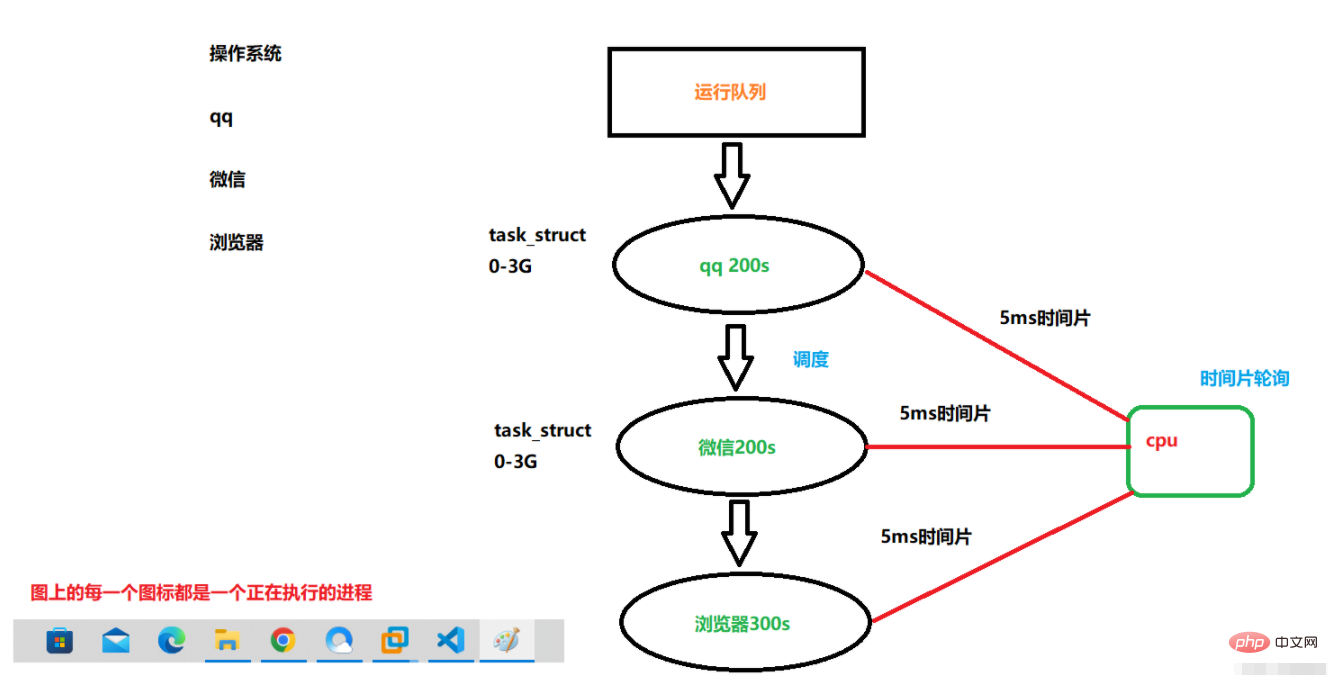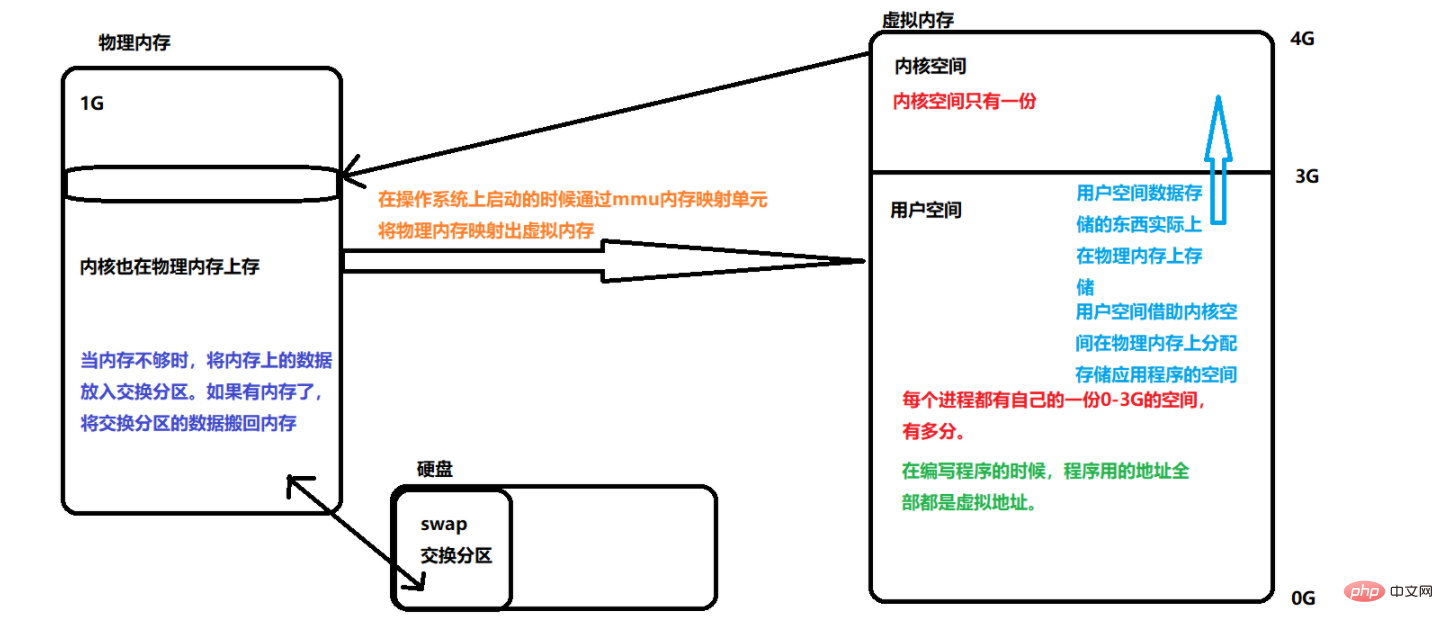Home > Article > Operation and Maintenance > What three parts does the linux process include?
The three parts of the Linux process: 1. The process control block makes a program (including data) that cannot run independently in a multi-program environment become a basic unit that can run independently, and can be combined with other Processes that are executed concurrently; 2. Program segment is the program code segment in the process that can be executed by the process scheduler on the CPU; 3. Data segment is the data segment of a process, which can be the original processed by the program corresponding to the process. Data can also be intermediate or final data generated after program execution.

#The operating environment of this tutorial: linux7.3 system, Dell G3 computer.
A process (Process) is a program in the computer that performs a running activity on a certain data collection. It is a system The basic unit for resource allocation is the basis of the operating system structure.
In short, it is the execution process of program.
A process is an instance of a running program, that is, a task that is being executed.
The process has a life cycle. It is created as the program runs and terminates as the program ends.
The process is the smallest unit for allocating resources. As long as a process is created, [0-3G] of user space is allocated.
As long as the user executes a program, the kernel will create a task_struct (PCB) structure, which represents the current process.
Maintains its own set of file descriptors and buffers within the process. As soon as the process execution ends, all its resources will be reclaimed by the operating system.

Time slice polling to achieve concurrency

Dynamicity: The essence of a process is the execution of a program in a multi-programming system. The process is dynamically generated and dies dynamically.
Concurrency: Any process can execute concurrently with other processes
Independence: A process is a basic unit that can run independently. It is also an independent unit for system resource allocation and scheduling;
Asynchronicity: Due to the mutual constraints between processes, the process has intermittent execution, that is, the processes are independent and unpredictable. Advance at a faster speed
Multiple different processes can contain the same program: a program constitutes different processes in different data sets and can obtain different results; but execution During the process, the program cannot be changed.
The composition of the process consists of three parts: process control block PCB (task_struct), data segment , program segment.
Process control block: Make a program (including data) that cannot run independently in a multiprogramming environment become a basic unit that can run independently, and a process that can execute concurrently with other processes.
Program segment: It is the program code segment in the process that can be executed on the CPU by the process scheduler.
Data segment: The data segment of a process can be the original data processed by the program corresponding to the process, or the intermediate or final data generated after the program is executed.
##4.1 Process control block definition
In order to describe the operation of the control process, the data structure in the system that stores the management and control information of the process is called the process control block (PCB Process Control Block). It is part of the process entity and is a part of the operating system. The most important record-keeping data structure. It is the most important data structure for process management and control. Each process has a PCB. When a process is created, the PCB is established and accompanies the entire process of running the process until the process is cancelled.
The essence of PCB is a structure. The name of PCB is different in different operating systems. In Linux, the PCB is called task_struct, and the PCB is the only means of controlling the process. Each process has a process descriptor. This "process descriptor" is task_struct. A lot of information about process control is stored in task_struct.
Memory pointers: including pointers to program code and process-related data, as well as pointers to memory blocks shared with other processes.
Context data: Saving the context is to save the value in the CPU register to the memory; restoring the context is to restore the register value in the memory to the CPU;
I/O status information: includes displayed I/O requests, I/O devices assigned to the process and a list of files being used by the process.
Accounting information: may include the total processor time, the total number of clocks used, time limits, accounting accounts, etc.
Other information
For example, a text editor is an interactive process.
For example, the process of gcc compiling a program.
For example, various services on windows.
Linux Video Tutorial"
The above is the detailed content of What three parts does the linux process include?. For more information, please follow other related articles on the PHP Chinese website!